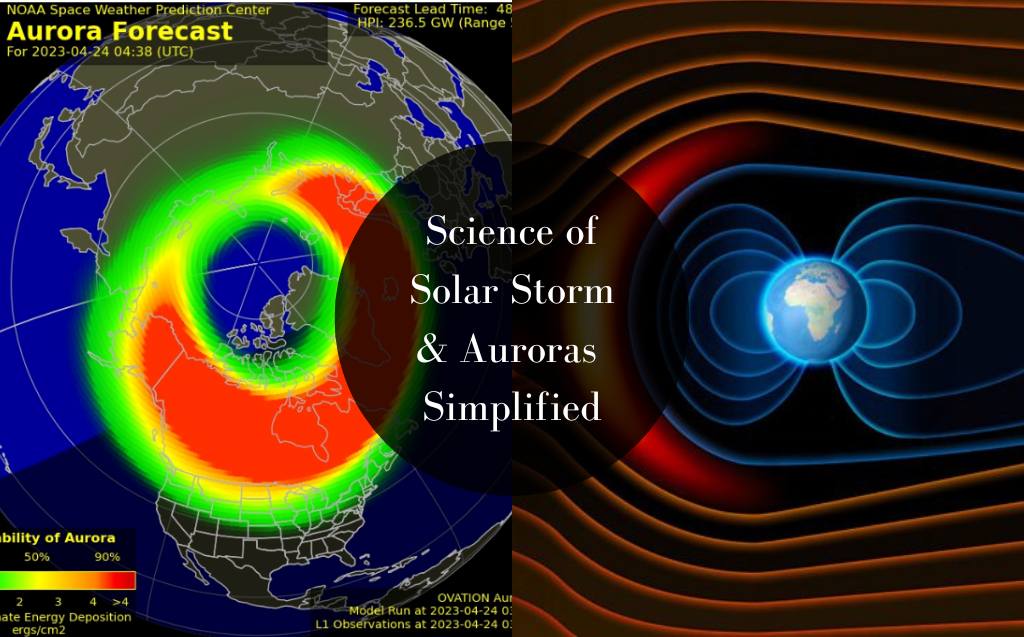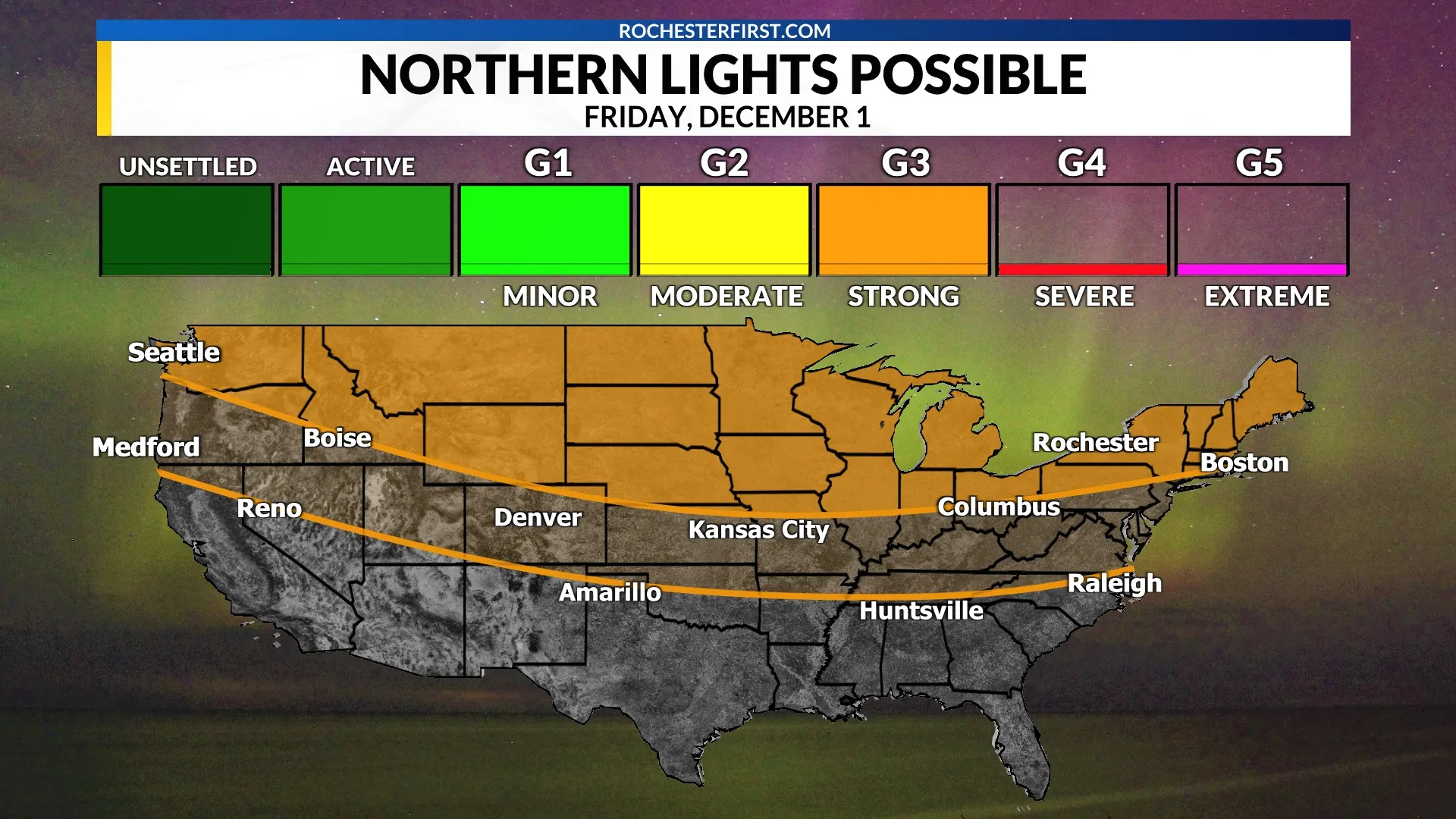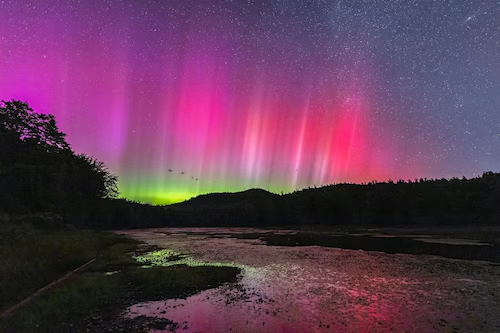Northern Lights Update: States to Watch Tonight
A portion of the northern U.S. may have a chance to see the northern lights this Saturday night, thanks to heightened solar activity as the sun approaches its “solar maximum,” according to a forecast from the National Oceanic and Atmospheric Administration (NOAA). This phenomenon, known as the Aurora Borealis, could be visible in states such as Michigan, Wisconsin, and North Dakota.
For Saturday night, NOAA predicts a Kp index of three on a scale of nine, indicating that the northern lights may be visible farther south than usual. This level suggests that conditions will be favorable for viewing the auroras in certain areas.
Recently, the sun released an intense X2.0 solar flare, the most powerful type of flare classified by NASA. This flare may disrupt radio communications, power grids, and navigation systems, posing risks to spacecraft and astronauts. Additionally, solar radiation has caused radio blackouts, with the potential for stronger radiation effects persisting through Monday, which could affect air travel for those flying at higher altitudes.
In terms of visibility, the northern lights are more likely to be seen in northern Canada and Alaska. The viewing line dips just below the Canadian border, suggesting a lower chance of sightings in parts of northern Montana, North Dakota, and Minnesota. However, areas in South Dakota, Wisconsin, and Michigan may also have opportunities to catch a glimpse of the lights.
To maximize the chances of seeing the northern lights, it’s best to view them between 10 p.m. and 2 a.m. local time, away from light pollution and at higher elevations. For photography enthusiasts, using a camera with the focus set to the furthest setting, along with a wide aperture, low shutter speed, and high ISO, is recommended. Smartphone users can utilize night mode and lower shutter speeds to capture the phenomenon effectively.



